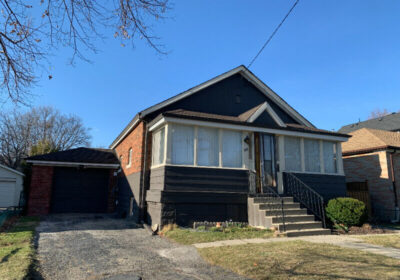Below is an overview of the home selling process in Canada to help you make informed decisions at every stage and get the best possible outcome for your efforts.
Step #1 – Estimate your home value and cost of selling your home
When you’re selling a home or property in Canada, all you may be thinking about is making money. But before you decide to sell, you should also consider what it will cost you.
The cost of selling a home can catch homeowners by surprise. A portion of your earnings will be spent on real estate agent commissions, along with an appraisal (about $400), repairs to the home, closing costs (about $500-$1,500 for sellers), moving expenses, and staging fees.
You may also face a mortgage prepayment penalty or discharge fee between $200 and $600 for paying off your mortgage early. You will need to check with your lender to see if this fee applies.
For some buyers, the cost of waiting is another thing to consider. For each month you wait to sell your home, you’re paying another month of mortgage, interest, homeowner’s insurance, and maintenance. If you’re hoping to reduce your living expenses and liability, listing your home as soon as possible may alleviate these costs.
The goal is to calculate what selling your home will cost you so you can set realistic expectations when turning a profit. Simply listing your home for more than you purchased it for doesn’t guarantee an automatic profit. You’ll need to consider how much you’re spending to determine how much you can list it for so you can do better than break even.
You should also estimate your home value to understand what your home is worth.
Step #2 – Choose how to sell your home
When selling your home in Canada, you have three main options: choose from hundreds of Realtors, sell your home yourself, or sell directly with an Xproperties.ca .
Home sellers might be surprised to know that not all Realtors are created equal. Not only do Realtors vary in skill in the industry; they also vary in commissions. Agent fees in Canada range from 3% to 7%, which has a major impact on how much of your home sale you walk away with.
For example, the average home value in Canada is $455,000, which means you could be paying between $13,650 and $31,850 in agent commissions alone. That’s a major difference that can quickly eat away your profits, so it’s essential to choose an agent that gives you the best value but also provides adequate service for the price you pay.
In hot markets, some homeowners skip the real estate agent commission altogether in favor of a For Sale By Owner (FSBO) approach. This means that instead of losing some of your profit to an agent, you take on their responsibilities yourself. However, homeowners don’t save as much as they expect because they still need to pay the buyer’s agent fee and the MLS listing fee. It’s also recommended to get a professional appraisal to set your listing price.
Make sure you weigh your options to see if you’re better off doing all the work yourself to save a little money vs. paying an agent to bear much of the home sale process and give you less responsibility in the process.
If you’re looking for a mostly hands-free approach that also gives you the best value, an ad on Xproperties.ca might make the most sense. You get a guaranteed offer on your home, no matter its condition, and don’t have to pay hefty real estate commissions.
Step #3 – Prepare Your Property for Sale
If you want to attract buyers the traditional way, you’ll need a standout listing that not only talks about the number of bedrooms and bathrooms but also sells the vision of what it’s like to live in your home. Aside from home features like big closets and square footage, talk about how close you are to area amenities. Mention if you’ve just repainted or added new appliances.
Use our guide on how to write a standout listing that will earn buyers’ attention or skip the listing and hassles of home preparation altogether if you choose to use an Xproperties.ca .
Most homes, commercial properties in Canada are not in sell-ready condition, which means you’ll spend time and money fixing up the home for potential buyers.
It’s difficult to estimate exactly how expensive this step is because repairs and maintenance can vary. Here’s a look at what some of the most common tasks will cost:
- Power washing the home’s exterior: $200
- Replacing the weather stripping on doors and windows: $150-$500
- Repainting all walls, doors, ceilings, and trim: $6,500 for a typical 2,000-square-foot home
- Repainting exterior elements: $1,000 or more
- New stove: $400-$3,000 or more
- New countertops: $70 to $80 per square foot
- New mailbox: $50-$200
Approach home repairs with caution. Some repairs and upgrades are necessary, but not all of them will add value to your home or help it sell faster.
The most valuable repairs are increasing energy efficiency (recoups about 60% of your investment), adding a kitchen island or whirlpool bathtub (earns about 65% of your investment), and replacing the roof (ROI ranges from 50% to 80%). Your real estate agent can help you figure out which upgrades are the most worthwhile in your market.
Step #4 – Add Appeal Inside & Out
Curb appeal makes a strong first impression. Boosting your home’s exterior with bright flowers, a new mailbox, or freshly washed walkways can set a positive tone for what the buyer will find inside.
You may also want to do a little home staging to make your home more attractive to buyers. Home staging goes beyond cleaning and painting to make your home stand out from others. Some people even go as far as renting art or furniture to create the right look. This can cost hundreds of dollars per room, so make sure you weigh the benefits carefully.
Step #5 – The Offer Process
The average time a home will stay on the market before going under contract will vary between markets. There’s also the possibility that your home will remain unsold, especially given Canada’s real estate market downturn at the end of 2018.
If you receive an offer on your home, you can either accept the offer as-is, decline it, or make a counteroffer. The negotiation process is a tricky scenario as each party wants to walk away a winner in the deal.
Once both parties have reached an agreement, the offer is documented as a formal contract, and the closing process begins.
Step #6 – Prepare for the Final Transaction
While most of the tasks associated with closing are the buyer’s responsibility, homeowners also have work to do. Before the final closing date, you’ll need to locate important home documents, make repairs stipulated in the purchase agreement, and create the official disclosure statements.
The seller is obligated by law to disclose any known latent defects in the home, such as mold infestations or other dangers. Under certain conditions, you may be required to disclose if the property has been the site of a marijuana grow operation or if there’s a stigma related to the property (e.g., a murder occurred on-site).
- Always Consult A Lawyer To Close Your Deal And To Draft Your Purchase & Sales Agreement.











